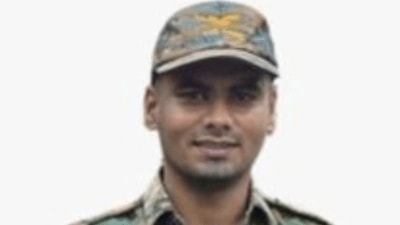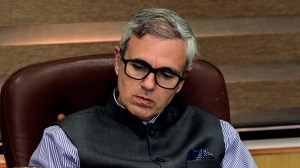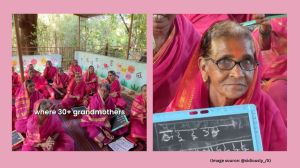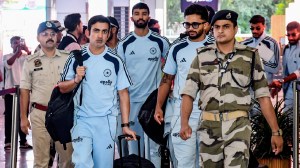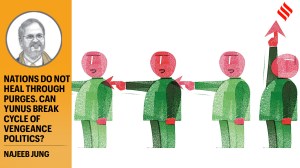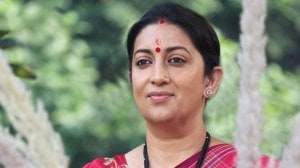In Rama Bhima Soma, Srikar Raghavan navigates Karnataka’s history through its language, politics and identity
Over the course of the book, the author takes us back to some of the more well-known landmarks of the 1970s and 1980s: the Boosa movement, the eruption of the form-changing Dalit literature, the rise of the Rajya Raitha Sangha
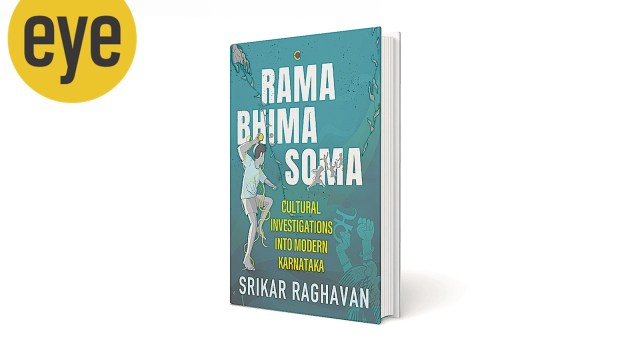 Raghavan writes with verve and audacity, as a young person appealing, no doubt, to a generation of short attention-span readers. (Source: Amazon)
Raghavan writes with verve and audacity, as a young person appealing, no doubt, to a generation of short attention-span readers. (Source: Amazon)Can “a poem show direction where there is none?”, Kotiganahalli Ramaiah once asked in his poem; in that very poem, his early hope gives way to despair. Despite its rich classical past and its insurgent and innovative modern presence, (and it’s eight well-deserved Jnanpith awards), Kannada is an embattled language today, challenged by the voracious appetite for English, and the ferocious neo-national push for Hindi. Not a day passes without one or another Kannada litterateur lamenting the sorry place of the language, particularly in cities like Bengaluru. As a state too, Karnataka has received much less visibility in the national imagination, despite Bengaluru being the favoured destination of migrant capital and labour alike.
Srikar Raghavan’s sprawling book, Rama Bhima Soma, part travelogue, part dive into contemporary literature, part autobiography, and part history of what he identifies as two crucial decades (the Seventies and Eighties) brings this important state of the Indian Union to an English reading public. His preferred cultural realm, for what he describes as his investigations into modern Karnataka, is literature. But it is his ruminations on a series of conversations he has had with people across Karnataka that animate his reading of Kannada literature. These include not only litterateurs, but assorted activists, ranging from the workers’ to the feminist and environmental movements.
Raghavan weighed anchor in Parkala, Udupi district, in order to write this book, but this immersion was not of the old-style social anthropologist kind. The reader is instead invited to roam with him across the state and across disciplines and times. If anything, Raghavan seems to flaunt the genre-bending nature of his enterprise. (Indeed, as we quickly learn, the book is not even confined to the two decades that he proposes to focus on). Over the course of the book, the author takes us back to some of the more well-known landmarks of the 1970s and 1980s: the Boosa movement, the eruption of the form-changing Dalit literature, the rise of the Rajya Raitha Sangha, (although Devaraj Urs’s political innovations have been given a miss, despite a disquisition on socialism and democracy). But there are some relatively unexpected nuggets here as well, as in his loving description of the Marxist Library of Mysore, and the people who nurtured it, or in the empathetic descriptions of the environmental movement opposing the Kudremukh Iron Ore project. There is an obvious fascination with the doomed figure of Saketh Rajan, ideologue, member of the Naxal movement, and talented researcher (and author of history books which were banned), who was tragically “encountered” in 2005. Through this tragedy, Raghavan returns to what one might say is an acknowledged preoccupation of the book: the fate of the Left movement in Karnataka, whether in early socialist engagements, especially given Ram Manohar Lohia’s enduring influence, or the official Communist parties and trade unions or the unofficial Left. One may even detect a certain nostalgia for those times, especially when his moral outrage is reserved for the denizens of the Right. Raghavan does the work of consolidating the critical events and literary debates of the period, in 12 chapters, and a coda, dotted with charming illustrations based on photographs/maps.
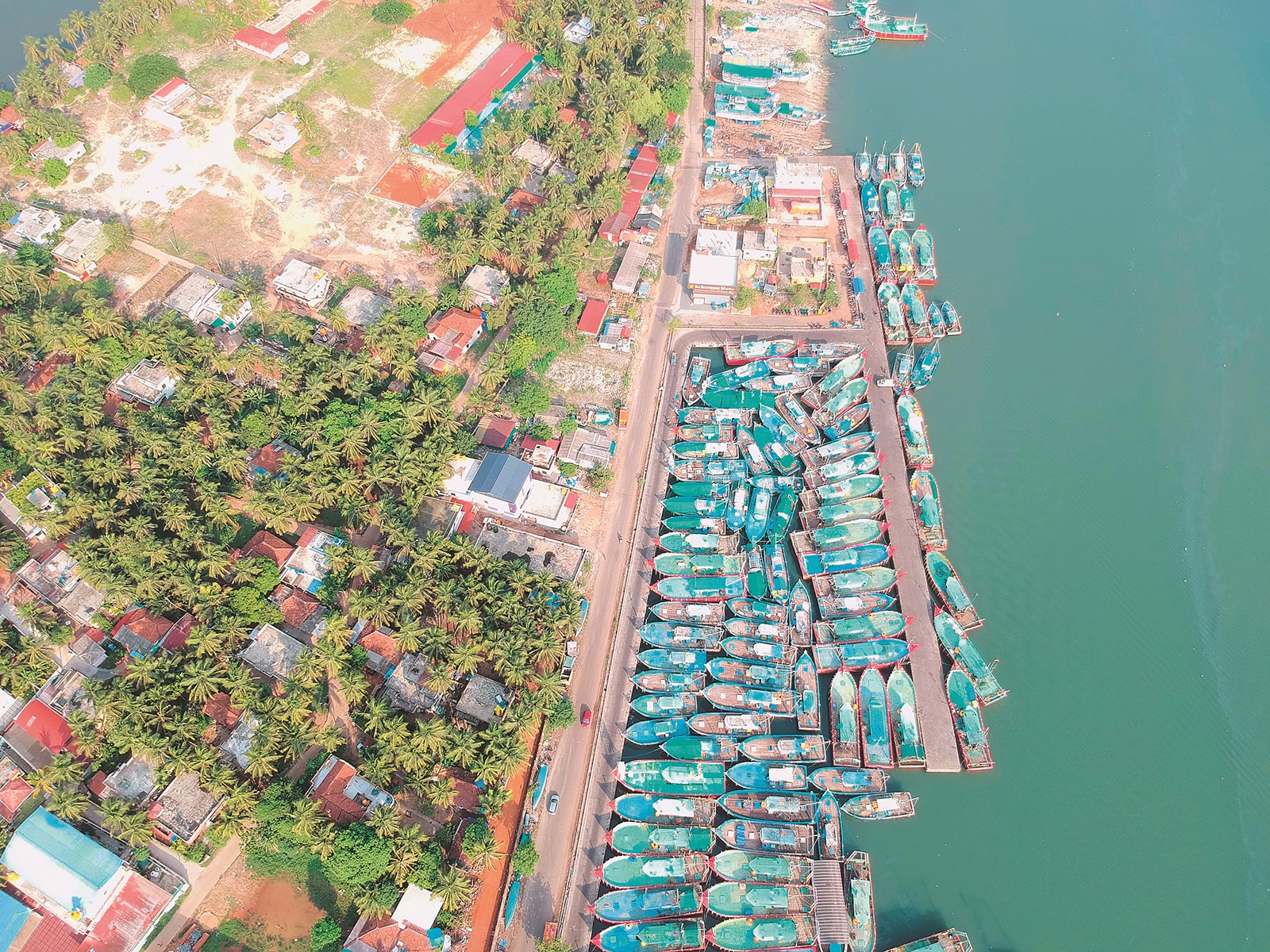 Aerial shots of Udupi, Karnataka (Source: Getty Images)
Aerial shots of Udupi, Karnataka (Source: Getty Images)
A historically varied state such as Karnataka, and language such as Kannada, needs the passionate-detachment that Raghavan brings to this book. There is no doubt that he knows his Kannada classics, which he cites, chapter and verse. For those uninitiated in the world of Kannada literature, this will come as a welcome summation. But nostalgia notwithstanding, Raghavan appears to be advocating a position beyond binaries, despite the marga-desi start, and the clear championing of the subaltern/desi voice elsewhere. His epigraph plumps for pluralities. But has the author, in order to arrive at that ideal place, merely restaged older moral, rather than current intellectual, dilemmas — between Gandhian-Marxist; socialism/communism-fascism? Is this why Prasanna appears more attractive at Heggodu than its “original” inhabitant, KV Subbanna, and his pioneering institution Ninasam? Conversely, have the strategic use of binaries such as Brahmin-non-Brahmin been jettisoned too quickly?
In the breathless race through the state and its literature, there cannot but be some casualties. Hosur Narasimhaiah finds mention, but not the science popularisation work which took Kannada beyond its mere linguistic identity (even though there is an amusing aside on charlatans in science) . The Marxist TS Ramaswamy laments that the Left “never understood the complexity of India’s cultural pasts”. But one wonders which culture is referred to here, when the rest of the book shows a profound, if critical, influence of the left on literature. Could Raghavan mean religion or caste? There is casual mention of mathas but they are surely the most distinctive institutions of Karnataka on social, religious, economic and, not least cultural, registers, and deserved longer treatment.
Raghavan writes with verve and audacity, as a young person appealing, no doubt, to a generation of short attention-span readers. Yet this is a book, given its length, that is not for the faint hearted. It calls for sharing the commitment of the writer. The style of writing, too, ranges from the lofty (as in his discussion of the marga and desi, that sets the tone for this book on language as identity) to the thought-provoking (as when he puts the word the word ‘bayilu’ to work, including multiple meanings ranging from “a plain and open field” to “a becoming one with the formless being”). But it also spans the confusing (the suggestion that Brahminism and patriarchy can be interchangeably deployed) to downright colloquial, perhaps even banal (especially his take on Vijay Mallya). Though self-reflection is a necessity of our times, Raghavan has not averted self-indulgence.
The declensionist narrative is, perhaps, a necessity in a book as ambitious as this one, because the present has left us all bewildered. Raghavan’s painstaking documentation of strands of thought and ways of being that have gone awry could not have come a day sooner. For that, we owe him gratitude.
The writer is a Bengaluru-based historian and was professor of History at JNU, Delhi







- 01
- 02
- 03
- 04
- 05


